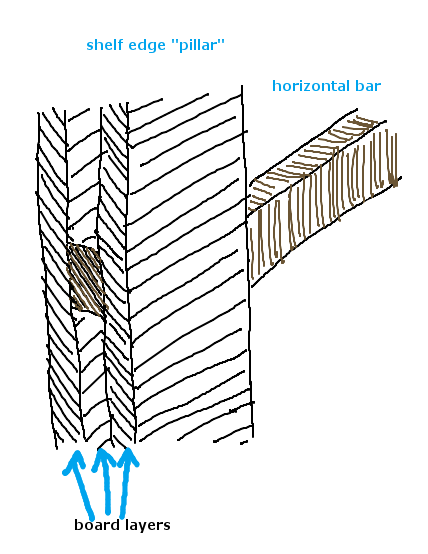This is inspired by a recent “request for ideas” by @JamesL . Hope some ideas are useful ![]()
Essentially, I have been working on free resp. low budget, mobile, compact furniture myself, just in for a truck rather than a flat. Here are some experiences and ideas from this that apply generically:
- Use what you find. Obviously that's the first rule for free furniture. It can be quite interesting to combine what is available into what you need, and I use it as kind of a mental exercise at times :) For half-finished products though (tubes, boards, aluminium profiles, wood sheet material, particle board sheet material) it's simpler: collect as much as you find, deconstruct it into these half-finished parts, store them.
- Use a modular construction system. I used a gridbeam-derived construction system with a 50 mm hole pattern with M8 screws (see), but then somebody recommended OpenStructures and now I'm migrating to this. No need to make every single measure compatible with your chosen modular construction system, just be sure to create simple parts (flat boards, L profiles etc.) in dimensions recommended by the system. Which for OpenStructures is multiples of 40 mm. This ensures that you can re-use parts for other furniture projects later.
- Reconfigurable furniture. As you want to be able to use the furniture in new places, it has to adapt to new places. I have made good experiences with a hole pattern around the edges of sheet material (see, though I'd now do it in OpenStructures derived 80 mm distance). It's nice to be able to mount everything everywhere, like with life-sized Lego®. The big problem with just hand tools is the required precision. I got somebody to create a drilling template bar for me with industrial equipment. But else, I would not drill all the holes upfront. Just mark them, and drill them on demand by holding the parts to connect together and drilling through both.
- Stack on a pallet. For mobility, choose furniture dimensions to nicely stack together on a 1200 x 800 mm EUR-pallet. For example, I use 600 x 400 x 300 mm for most of my box-sized shelf parts. Sending a single, fully stacked EUR pallet (ca. 2 m high) with all the furniture is the cheapest way to ship bulkier cargo across Europe. Because, transport space is mostly paid by space, not weight, and goods on pallet are always cheaper.
- Recommended tools.
- power drill
- small angle grinder with 125 mm disks (use the 1 mm thin stainless steel cutting disks for cutting all metals, but be careful)
- reciprocating saw (cut along straight boards for straight cuts)
- circular hand saw (optional, but allows more precision)
- essential hand tools (the more the better, but just collect them over time …)
- Stainless steel nuts and bolts. I found a nice technique for using nuts and bolts in a flexible way: I buy mixed lots of stainless steel nuts and bolts from ebay.de (ca. 2 - 3 EUR/kg), then cut them to size with an angle grinder as needed. Since it's stainless steel, no rust problems doing so. When cutting threads, grind a 45° chamfer to it by rotating it against a running angle grinder with thick grinding disk, so that the material is taken off, not towards the thread. After that, putting on nuts is nice as with industrial produced thread ends.
- Bolts standard sizes. I made good experiences with limiting the sizes of bolts I use for furniture items to M6 and M8. It means that after buying a few of these types, you have all the types you ever need, rather than just a few types of a few more diameters.
- Cardboard furniture. Cardboard furniture is nice and super low budget, except in humid environments or with very damp air (which softens the corrugated cardboard). It is in any case great for prototyping furniture.
- Sandwich construction. See the sketch drawing below, showing a detail of connecting a shelfboard to one "edge pillar" of a shelf. I watched my Dad using this technique and thought it's nice :) Esp. nice is that you can use all kinds of too short and too thin wood material for this, as the sandwiching both makes it thicker and allows to use shorter parts.

 BITCOIN ) but in the field of furniture .
BITCOIN ) but in the field of furniture .